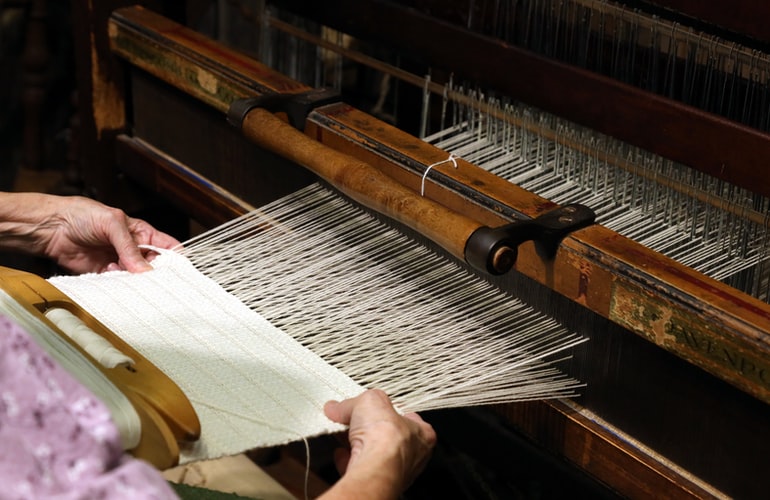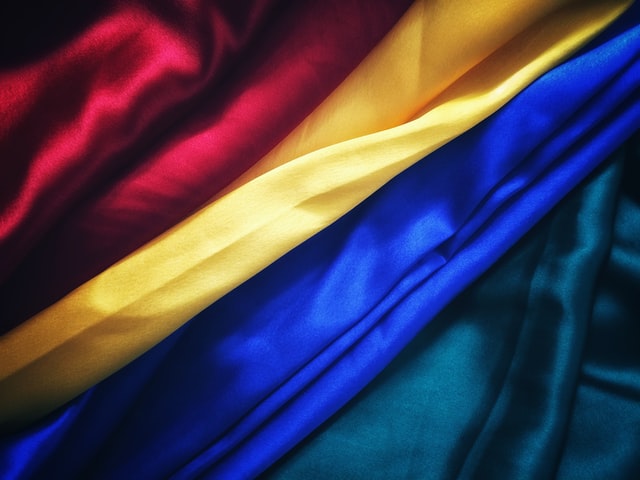By: R. R. Gosai
R R Gosai and Associates. Ahmadabad – Gujarat, India / Consultant to the Textile and Apparel Industry
Abstract: Now a day’s Textile and Apparels are becoming more and more fashion-oriented. As per fashion expert’s opinion, any fashion last hardly for 3-6 months, thus Normally once new fashion is launched at fashion shows, it gains popularity among mass consumers within a month or two and by this time traders have to refill their self accordingly to satisfy customers needs.
In such a scenario, the time gap after placing orders with apparel manufacturer to get the items produced, getting supply and fill the self becomes very crucial. Thus shortest shipping time, fast manufacturing and delivery time plays a very important role.
Here Africa gets the biggest advantage over other textile and apparel manufacturing giants like India, China, Bangladesh and other South-East Asian countries, due to its very close proximity of Europe and American markets. The author here discusses issues as how much Africa is or not able to take benefit of this and what strategy it must employ.
Introduction:
Africa Continent produced about 4-5% of world cotton crop and thus in past it was a major textile-manufacturing centre however, in last few decades many textile-manufacturing plants closed down thus region has lost this status. Reason can be many but if proper strategies at the government level are developed and implemented, having location advantage & impact of AGOA/COTONOU agreements, lost status can be regained and Africa gets benefit of the situation. Let us analyse present scenario for entire textile and apparel value chain prevailing in region and steps needed to improve.
Fibre Scenario:
About 90% of whole Africa’s cotton crop is coming from West and Central Africa, normally known as Francophone region however, due to very poor logistics and rail/road network it cannot reach to countries of east cost like Ethiopia, Kenya etc… where yet some textile manufacturing exists.
Of course Nigeria is able to utilise some of its own cotton crop and also has some polyester fibre manufacturing capacity. Further majority of ginning and cotton marketing in those francophone countries are controlled by French corporate more interested in export trade.
Average size of cotton farm is less than half hectors with average yield of less than 500 kgs/hector (due to traditional cultivation methods) against world average of +750 kgs/hector thus, making cultivation unviable. Ginning is still done on old technology thus quality of cotton do not stand in comparison to Australian, American, Chinese, Egyptian, Sudanese, CSA countries cotton making it unviable to spin medium, fine and superfine counts.
There exists very negligible capacity of silk and wool fibre manufacturing but no one has yet tried to explore it commercially and most of those fibres are consumed by local handloom artisans for making some traditional wear.

Textile Manufacturing Scenario:
Textile Manufacturing comprises mainly of three stages i.e. Yarn Forming (spinning), Fabric Forming (weaving/knitting) and Fabric Processing (dyeing, printing, finishing). In some countries like Kenya, Nigeria, Angola, South Africa some activities are followed but are not capable to feed highly quality conscious export markets and are mainly catering to local markets. Though recently Ethiopia is coming up strongly in developing textile manufacturing sector but it has to depend on imported cotton from cotton majors.
Further textile manufacturing is highly capital and labour intensive industry and if Africa has to develop this sector of international standards, has to depend on foreign investments mainly from China, India and Europe.
Apparel Manufacturing Scenario:
Some activities do exists but are mainly as household or decentralised industries catering to local elite market. Traditionally African women are good at tailoring and artisans work. This sector doesn’t require high investment yet is good employment provider. Here good opportunity do exists for Africa to concentrate.
Market Scenario:
Africa has second highest population (next to Asia) among all five continents of world thus offer good local market but main negative factor is poverty of local peoples thus a major portion of market is catered by illegally imported second-hand apparels. Only elite population, which is hardly 5-10% of total population, has buying power of fresh new apparels. This makes any development of industry for local market unviable.
Infrastructure Scenario:
Africa continent comprised of some 50 odd small tiny nations each with different political set up and ideology. Some are even fully landlocked and with heavily thick wildlife forest coverage. Due to this a most neglected factor for Africa is missing proper and sufficient intracontinental/within-country road or rail networks.
Thus distribution and transportation of raw material, finished goods within country, region as well to/from seaport makes the herculean task. Further adequate and reliable power supplies, proper distribution of quality water supply, drainage system are other areas needing attention.
Availability of skilled manpower:
Due to high poverty level, missing higher or trade/skill-related educational institutes; education level of people is very low resulting to insufficient availability of skilled manpower. Further local gents population is very less interested in work. Thus industry has to depend on imported skilled workers/supervisors and managers.
Political Scenario:
In many countries of Africa, the stability of the government and no clear cut policy frame work exists. This is one and important area where any investor will consider from safety and security angle. Corruption, law & order situation and ease of doing business are other area needing attention however, in recent years some good and industry-friendly atmosphere is being created by some countries in Africa, Ethiopia is one example of this.
Than in-spite of all above mentioned negative factors, author feels Africa can provide good opportunities to become clothier for Europe and America and for that there are many positive factors too. In following paragraphs, discussions are made on those issues and steps/strategies to be followed by governments as well industry owners those who wants to capture the opportunities.

Advantages of Africa:
– The biggest advantage to Africa particularly western part countries like Mauritania, Senegal, Cote’ d Ivory, Gambia, Ghana, South Africa etc.. have is shortest, 5-10 days shipping time. Thus high fashioned apparel traders can source their needs and fill their self in time with new fashion wears.
– These countries, except Mauritania, have sufficient availability of locally grown cotton.
– Another advantage is trade agreements like AGOA with America & COTONU with Europe through which made in Africa (of countries who are signatories of these agreements – about 39 African countries from odd 50 countries) goods have preferentially duty free access to those markets.
– Majority corporate house in Europe & Africa (in America too at some extent) have a culture for employees to wear a specific type of uniform.
– Ethnic Africans in America & Europe constitutes to about 10-15% of total population. They still love to have apparels made with traditional African prints and designs in their ward rob.
Above points offer a good potential in American & Europe market for high fashioned, mainly ladies wear, made using traditional African prints/designs, stitched in western style and also for uniform designs of Made in Africa Apparels. According to study on location advantages, area offer good advantages for locating industry are:
Dakar and St. Louis – Senegal, Ziguinchor – Gambia, Bissau and Conakry – Guinea Bissau, Free Town and Monrovia
– Sierra Lone, San-Pedro and Fresco – Liberia, Abidjan and Takoradi – Cote ’d Ivory, Accra, Lome, Cotonou, Lagos and Port Harcourt – Nigeria, Douala – Ghana, Libreville and Port-Gentil – Gabon, Pointe-Noire – Congo, Luanda – Angola and Cape Town – South Africa. (It is advisable to have detailed evaluation of location, its applicability to AGOA & COTONU agreements etc.. before final decision. This list is just for guide).
However, to tape these available potentials, certain strategic approaches collectively (as outlined below) by Various African Countries governments as well Textile & Apparel Manufacturers have to follow.
Strategic Approaches at government level:
– Control illegal import and distribution of second-hand garments.
– Formulate industry-friendly policies, labour laws, company laws, finance landing schemes etc… with due incentives and encouragements for investment. Improve law and order situation, curb corruption.
– Encourage Ginning companies to form cotton farmer’s co-operatives and provide all required infrastructure, equipment, financial, technical and managerial knowledge and form big farm size suitable for mechanical cultivation and farming. This will improve the average yield/Hectare and also quality of cotton.
– Develop clusters and Textile/Apparel Industrial Park (as being done in India on PPE/BOLT model) with the complete infrastructure required by industry. Location for such cluster/Industrial parks should be in close proximity to favourable locations listed above.
– Establish technical education and skill development institutions.
– Provide provision of permitting part contractual manufacturing outside country (anywhere) at “country of origin” clause in AGOA & COTONU agreements.
– Treat Textile and Apparel manufacturing as prime industry of country to encourage FDI and locals investment.
– Develop the logistic infrastructure of road/rail network connecting to major seaport.
Strategic Approaches at Industry/Investor level.- Existing Ginning industry must upgrade their technology.
– Start establishing apparel manufacturing with the provision of fabric dyeing and printing facilities from imported RFD fabrics. This will not require big investment but returns will be very high.
– Make the provision of workers’ hostel and skill development/basic work training systems. Understand such model successfully applied by South India’s spinning industry.
– Encourage African Female’s employment; they are sincere, hard-working and good at stitching/artisan skills.
– Be part of PPE/BOLT model for establishing an industrial park and prefer such parks for establishing industry.
Conclusions:
Africa do offer good opportunities for westernised designed value-added, high fashioned and uniform apparels to American and European Markets if proper strategic planning is done by respective governments and industry. Indian, Chinese and South-East Asian Textile Corporate seeking export of high value apparels, must consider some investment in this region. To begin with, they can go establishing apparel manufacturing units with some capacity of fabric dyeing and printing on imported RFD fabrics. This can help them to provide faster deliveries of new-fashioned designs to their export markets of America and Europe.
For ease of operation, they can establish and register a new company, (maybe a subsidiary type of their parent company), buy African cotton, transport it to convert it as RFD fabric on job work basis to their parent company, re import it for dyeing/printing and converting to apparel at their African set up, as per order and make export. By this way they will be able to meet the clause of “country of origin” requirements for getting benefits of AGOA and COTONU agreements.
Reference:
During 2003-04, World Bank initiated a study to explore the possibilities of developing Textile and Apparel Manufacturing industry in some countries of West and Central Africa Region. The thinking behind such study was that in those countries doing export of Raw Cotton, if T & G industry is established, they will be able to export value-added product thus their higher export earnings and improved economy.
Author of this article was member of this study team as expert for Ginning, Textile & Garment manufacturing operations. The points mentioned in this article are based on observations and findings done during this study.
About Author:

Mr. R. R. Gosai is qualified textile technocrat with about 45 years of professional experience in Textile & Apparel Industry. His carrier spans from working as shop floor production supervisor to Director (Operations & Planning) of a reputed textile group of India. He also worked as a researcher, trouble shooter, World Bank consultant, project manager, Group’s Technical head and CEO of various textile plants working all type of fibre mix, product mix on conventional to latest manufacturing technologies and machines.
Travelled widely world over, has on credit many articles published in various international textile & apparel journals. Presently as a consultant, he is advising many textile groups on project planning/execution, technical performance audit & improvement as well strategy formation for growth.
He can be approached by e-mail: [email protected] / by phone: +919723887611.




















